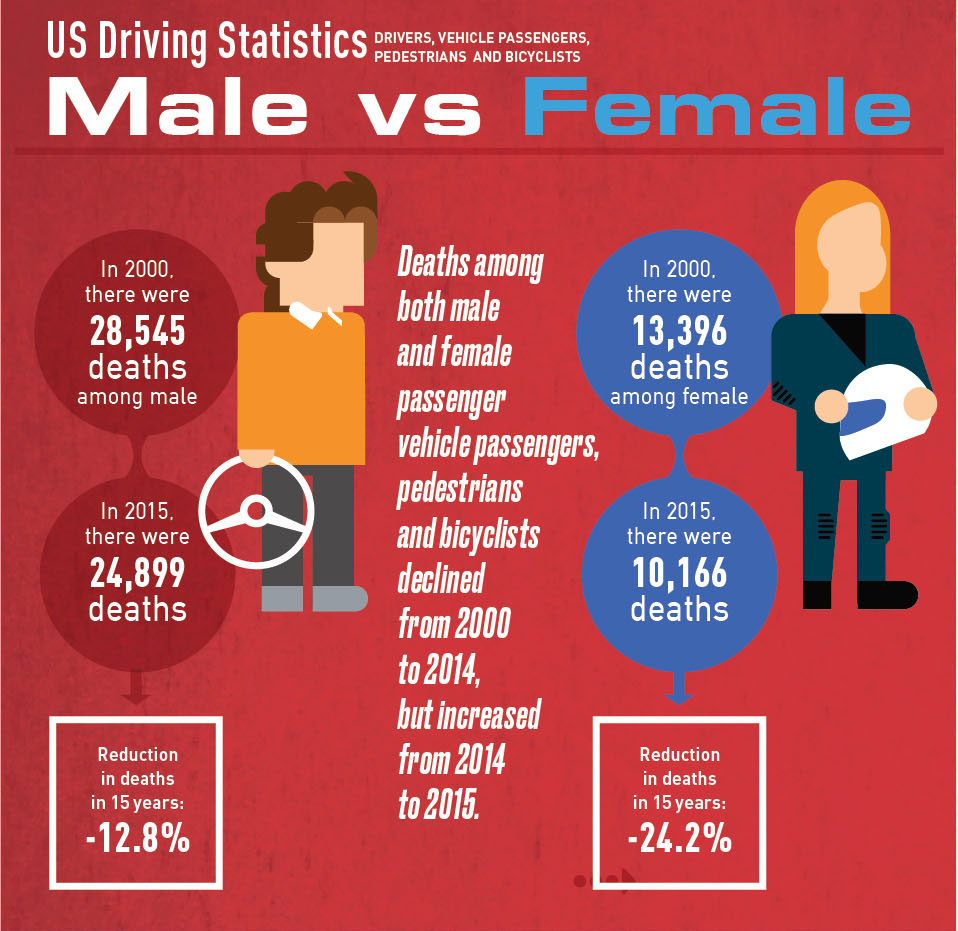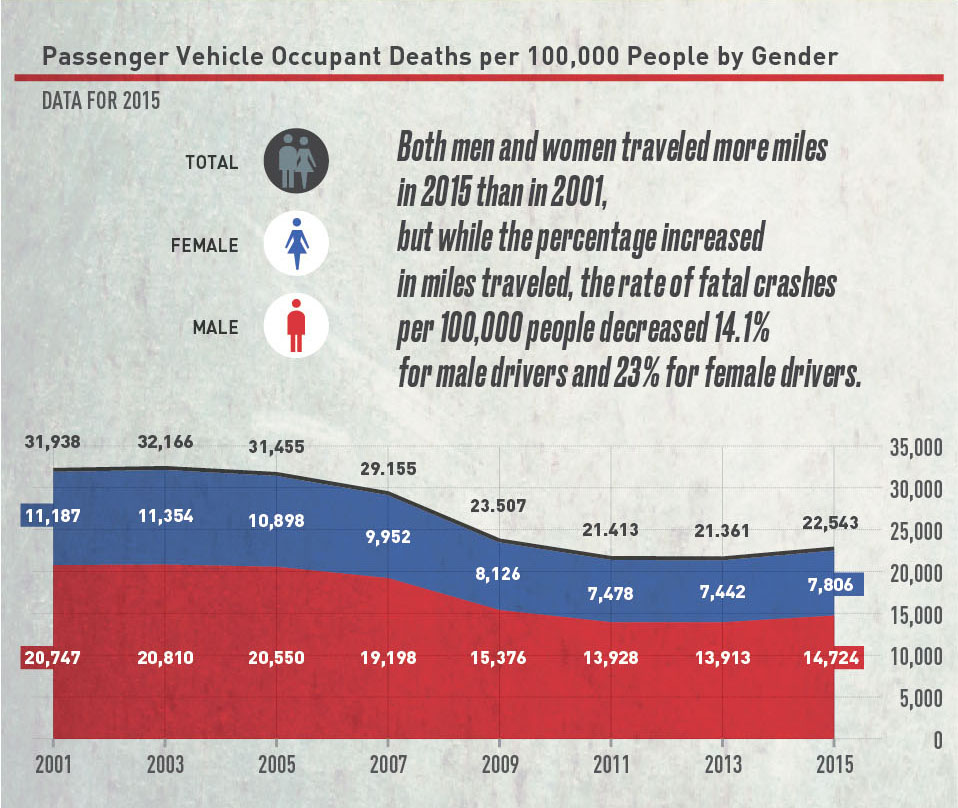Since the invention of motor vehicles in the 1880s, they have become a staple and a necessity in many lives. The modern and convenient transportation cars provide has allowed for immeasurable growth and prosperity. 90% of workers travel to work in cars, 87% of all daily trips are done by car, and the average driver spends 55 minutes each day behind the wheel. However, along with the benefits, it’s impossible to ignore the safety risks that accompany our motor-heavy culture.
Every day there are scientists, manufacturers, and individuals working to make our roadways safer. While automobile safety is inarguably improving, there are still an estimated 10 million motor vehicle collisions every year. These incidents vary from the smallest fender benders to catastrophic crashes involving totaled cars, life-changing injuries, or even death.
Despite time yielding safer cars, roads, and drivers, the National Center for Statistics and Analysis declared in 2011 that motor vehicle accidents were the #1 cause of death for people ages 8-24, and one of the Top 10 causes of death for all people ages 1-64. In 2015, 35,065 people died as a result of motor vehicle accidents, a 16% decrease from the 41,941 deaths in 2000. While less than .5% of crashes result in a fatality, the majority of crash deaths would have been preventable, had all road and safety laws been observed.
Motor vehicle deaths are a huge issue, and the first way to help reduce their numbers is to be better educated about how they are caused.

When it comes to understanding motor vehicle fatalities, one statistic immediately emerges as significant: Men are significantly more likely to die in motor vehicle accidents than women. In 2000, 28,545 men died in car accidents, compared to 13,396 women. In 2015, there were 24,899 male deaths and 10,166 female deaths.
Despite this total decrease of nearly 7,000 people, motor vehicle fatalities remained approximately 70% male and 30% female. This gap is the result of many factors, but two possible causes that stand out from the rest involve biology and culture.

Biology
Differences in the biology of men and women influence overall trends of behavior – the biggest difference between men and woman being levels of testosterone vs. estrogen. Each hormone affects the brain differently when it comes to driving, and each offers its unique strengths and weaknesses.
Effects of Testosterone
Higher testosterone levels contribute to an increase in two very important driving skills: visual processing and spatial awareness. Visual processing refers to the brain’s ability to understand the images registered by your eyes. Better visual processing allows a driver to interpret road conditions and the movements of other cars more quickly. When driving, tenths of a second could be the difference between an accident and a near miss, making visual processing an important ability.
Spatial awareness is the ability to understand the relationship between yourself and other objects. The effect of variations in spatial awareness abilities can be difficult to measure, as many people aren’t aware if a misjudgment in spatial awareness contributed in some way to their collision.
Testosterone also influences the temperament of a driver by boosting aggression levels. This does not make men violent drivers, but it can contribute to men taking greater risks on the road and having a tendency to feel overconfident.
Effects of Estrogen
Estrogen has its own distinct influences on the way women drive. First, estrogen boosts concentration, which increases a woman’s ability to focus on the road without distraction. Higher estrogen levels have also been connected with improved memory, an overlooked attribute as it relates to driving. Being able to remember desired routes or the amount of time a trip takes tend to boost the comfort and the overall safety of the driver.
The difference between the benefits of estrogen and testosterone are in their uses. The boosted concentration and memory provided by estrogen tend not to have negative applications. However, the boost in visual processing and risk-taking tendencies from testosterone are behaviors that could easily lead to dangerous outcomes.

Culture
While these hormonal differences do make a difference in the driving styles of men and women, they don’t fully justify the higher rate of male fatalities. Differing cultural influences are also connected to the increased rate of male crash fatalities.
Analyzing cultural influences can be a tricky task—particularly with something as pervasive as cars—because there are so many sources of influence in our daily lives. Many of these cultural influences are the result of stereotype and history. Despite the difficulties, it is clear to see how car culture affects men and women differently. Cars are seen as a more masculine item. According to CNW Marketing Research, while men and women both drive and use cars similarly, the purchase of cars designed specifically for sport and play is male dominated. This imbalance often starts in childhood with boys being given toy cars and trucks to play with far more often than young girls. The idea of cars as toys is a subtext that carries through to adulthood and further influences a driver’s actions once they are behind the wheel.
In adolescence, racing-style video games specifically target males. In these games, when cars are destroyed or drivers killed, they simply regenerate over and over again. For example, Grand Theft Auto is an action-adventure video game where players steal cars, drive around cities as fast as their controllers allow, and complete challenges. The most recent version, GTA V, has made over $2 billion since its release in 2013. Only 15% of GTA users are female.
At each stage in life male-focused car marketing emerges: toy cars and tracks for boys, video games for teens, and dream sports cars for adults. This lifelong progression of car culture influences the way men think about cars, as well as the way they drive them.
Cars are marketed to women differently, if at all. In fact, a study by CNW Marketing Research discovered that 75% of women feel misunderstood by carmakers. This disconnect between buyers and sellers has led to greater differences in the buying experience.
CNW also found that women did more research and approached car sellers with a clearer idea of what they were looking for than men. Tropes about soccer moms and minivans are based in truth, as women are far more likely to focus on safety features, reliability, and convenience when purchasing a car than their male counterparts who focused instead on performance and style. This results in women ending up more often with safer and more reliable cars, resulting in female drivers having a lesser chance of dying in a car accident.

Other Factors
Additional factors that influenced the higher number of male fatalities in motor vehicle accidents include greater time spent behind the wheel, less frequent use of safety gear, and the increased likelihood of speeding and/or driving while intoxicated.
Men drive an average of 30% more miles per year than women and are far more likely to have driving related professions. 94.9% of truck drivers are men, as well as 87% of taxi drivers and 62% of postal carriers. This gives men increased exposure to the dangers of the road.
Men are not only more frequent users of cars; they are also more frequent motorcycle riders. Women own a mere 14% of all motorcycles nationwide. When factoring in women as passengers, they account for 24% of all motorcycle riders. However, a disproportionate 91% of deaths in motorcycle accidents are men. Researchers attribute this to the fact that women are more likely to take motorcycle training courses, more likely to start riding later in life, and more likely to wear helmets and other safety gear.
Proper use of safety gear affects wreck fatalities for cars as well as motorcycles. Of the 35,065 deaths in 2015, 48% involved people killed while not wearing a seat belt. That same year, seat belts were credited with saving 13,941 lives. Women are 5% more likely than men to wear a seat belt, which helps protect them from more serious injuries or fatality in a crash.
Along with seat belt use, the biggest factors that cause car accidents to result in fatalities are speeding and alcohol. 30% of fatalities involved a driver with a blood alcohol content above .08, and 26% of fatalities involved a driver who was speeding. These statistics can overlap; a driver could be drunk, speeding, and not wearing a seatbelt all at once.





